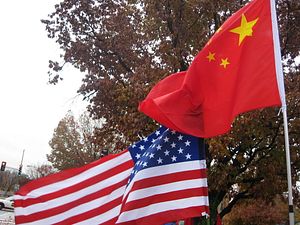Editor’s Note: The following is a preview of the latest edition of the APAC Risk Newsletter, presented by Diplomat Risk Intelligence. To read the full newsletter, click here to subscribe for free.
I hope everyone’s 2020 is off to a reasonable start. The pace of global events certainly did not slow down in the final days of 2019, with the U.S.-Iran crisis going from a slow simmer to an all-out boil. To kick off this year of newsletters, I want to offer a preview of what risks, trends, and events in the Asia-Pacific region you should be keeping on your radar as the new year begins. As a result, this issue will be a little different from the usual format, with a focus on the big stories that are likely to drive the year ahead.
The U.S. Election
On November 3, American voters will be going to the polls to elect the person that’ll occupy the White House for a four year term starting on January 20, 2021. Donald J. Trump, the incumbent, will face off against whoever wins the Democratic Party’s primary, which will become known by the Democratic National Convention this summer. Given the Trump administration’s adoption of a drastically different approach to U.S. statecraft in Asia and around the world, it seems fitting to place the U.S. election as probably one of the more significant events this year in terms of its impact on Asia. Everything from the future of the U.S.-China trade war, the Korean Peninsula diplomatic process, and U.S. alliances depends on the outcome of this election. Four more years of Trump will look very different from four years under a Democratic administration. Democrats are thinking along very different lines when it comes to Asia policy too. (For an overview, see a recent piece by Van Jackson in The Diplomat’s magazine, outlining the basic foreign policy schools of thought within the party.)
Trade War: Year 3
Mid-2020 will mark the third year of the Trump administration’s trade war with China (as measured from the start of the first round of U.S. tariffs on Chinese exports). The year is certainly set to kick off on a high note, with equity markets bubbly on the news of an impending “phase one” deal signing. The deal was agreed in the final weeks of 2019. For an overview of what will feature in the “phase one” deal, see this from Reuters.
China has announced that Vice Premier Liu He, Beijing’s point man on trade talks with the United States, will travel to Washington to sign the agreement. The signing was announced by Trump on New Year’s Eve in a tweet promising that “high level representatives of China will be present.”
The third year of the trade war may begin on a relatively high note, but it’s questionable how sustainable the positive momentum might be. Progress toward an eventual successor deal — a “phase two” agreement — is expected to continue, but it’s unclear if both sides can be successful. It’s worth recalling that the U.S.-China relationship suffers from greater differences than what the term “trade war” allows. Even on economic terms, broader economic decoupling in the technology between the two sides is likely to continue and intensify. Tussles over Huawei in 2019 are just the start. Expect to see U.S. export controls on critical technologies continue to intensify, the U.S. Department of Justice continue to crack down on Chinese espionage and intellectual property theft, and Beijing continue its push for indigenous expertise and innovation to wean itself off reliance on U.S. technologies. The trade was is far from over.
To read the entirety of the latest edition of the APAC Risk Newsletter, presented by Diplomat Risk Intelligence, click here to subscribe for free.

































